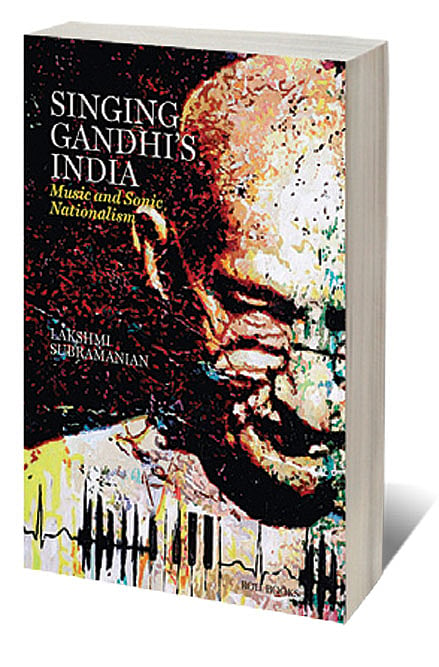Nationalist Anthem

THE BHAJAN HAS no place in the recent protests against the Citizenship (Amendment) Act (CAA) and National Register of Citizens (NRC) across the country. This is because the bhajan no longer has the power to cut through class, caste and religious divides. Most importantly, the bhajan does not have the backing of a Gandhi, who strategically gave it a canonical status during the Indian independence movement. ‘Vaishnava Jana Toh’, ‘Ram Dhun’ and ‘Raghupati Raghava Raja Ram’ are among the well-known bhajans that fuelled Gandhi’s vision of nationalism. Historian Lakshmi Subramanian’s book explores how Gandhi popularised music, starting with the bhajan, for political mobilisation.
To Gandhi, music was more than a powerful tool being deployed to stir patriots into action. It was a spiritual practice or as he wrote, ‘the music of karma and of being’. The book refers to his writings in publications and in the observances at Sabarmati ashram, offering a chronological account of his relationship with music. The author divides Singing Gandhi’s India based on the two duties that were integral to Gandhi’s life—prayer and spinning the charkha—both of which were also intrinsically connected to bringing people together by using music.
Of course, the book would be incomplete without referencing his autobiography, The Story of My Experiments with Truth. Subramanian finds that it was during his time at the Phoenix Settlement in South Africa, as described in his autobiography, that Gandhi was drawn first to the idea of sonic oneness. The Phoenix model, as the historian describes it, is based on the Sunday service where Gandhi witnessed Hindus, Muslims, Parsis and Christians singing hymns and reading spiritual texts in various languages. This encouraged him to hope for a similar interfaith community bound by music when he returned to India.
2025 In Review
12 Dec 2025 - Vol 04 | Issue 51
Words and scenes in retrospect
It is at Sabarmati Ashram that Gandhi fulfilled this dream with a set of accomplished musicians led by the resident music teacher Narayan Moreshwar Khare of the Gwalior gharana. Khare was a student of Vishnu Digambar Paluskar, the celebrated guru who founded the Gandharava Mahavidyalaya, an institute of Hindustani classical music. Subramanian points out here that while Gandhi was not a connoisseur of the Hindustani classical tradition, he appreciated the heft that the form brought to any style of music including the bhajan and persuaded Paluskar to contribute to his vision of sonic nationalism by sending Khare to his ashram. It is Gandhi who also drew Raihana Tyabji, who added verses from the Quran to the repertoire of devotional music including songs written by Kabir, Nanak and Bulle Shah, sung at the ashram. Subramanian’s book also reveals how Gandhi’s approach to music was focused on nationalism, almost entirely disregarding the aesthetic aspect of it, when compared with, say, Rabindranath Tagore’s poetry or songs that evoked a sense of romanticism even as they inspired patriots.
With many books on music to her name including—Veena Dhanammal: The Making of a Legend (2009) and New Mansions for Music (2008)—Subramanian has the ability to look at music through various filters. She writes with authority on the art practice that is music as well as the social context within which it was performed. The author also highlights the gender dynamics that come into play with regard to Gandhi’s thoughts on music. She writes that ‘while [Gandhi] did not find music especially suited to women, he was convinced of its potential to liberate women from inhibitions and notions of false modesty’. It was with this purpose that Gandhi convinced Saraladebi Chaudhurani, the founder of Bharat Stree Mahamandal, the first women’s organisation in India, to take up spinning the wheel and also sing as she did so. This created another community that would be bound together by music.
Singing India’s Gandhi is a meticulously researched, definitive analysis of music history, but is by no means a light read. Give the book the serious attention it demands and you’re on a fascinating journey through time.

